The Wrack
The Wrack is the Wells Reserve blog, our collective logbook on the web.
The Wrack is the Wells Reserve blog, our collective logbook on the web.
In the waning years of the 20th century, the Wells Reserve made some technological leaps. First, the reserve registered its collection of research journals, books, videos, and unpublished reports with the Maine School and Library Network. By establishing its Coastal Resource Library, the reserve became eligible to obtain T1 internet access at the Laudholm headquarters through Maine's IT network.
Then the reserve set its sights on the World Wide Web. During the dramatic rise of dot-coms—before the boom went bust in 2000—Wells Reserve became a dot-org. The domain wellsreserve.org was registered 25 years ago today: December 23, 1998.
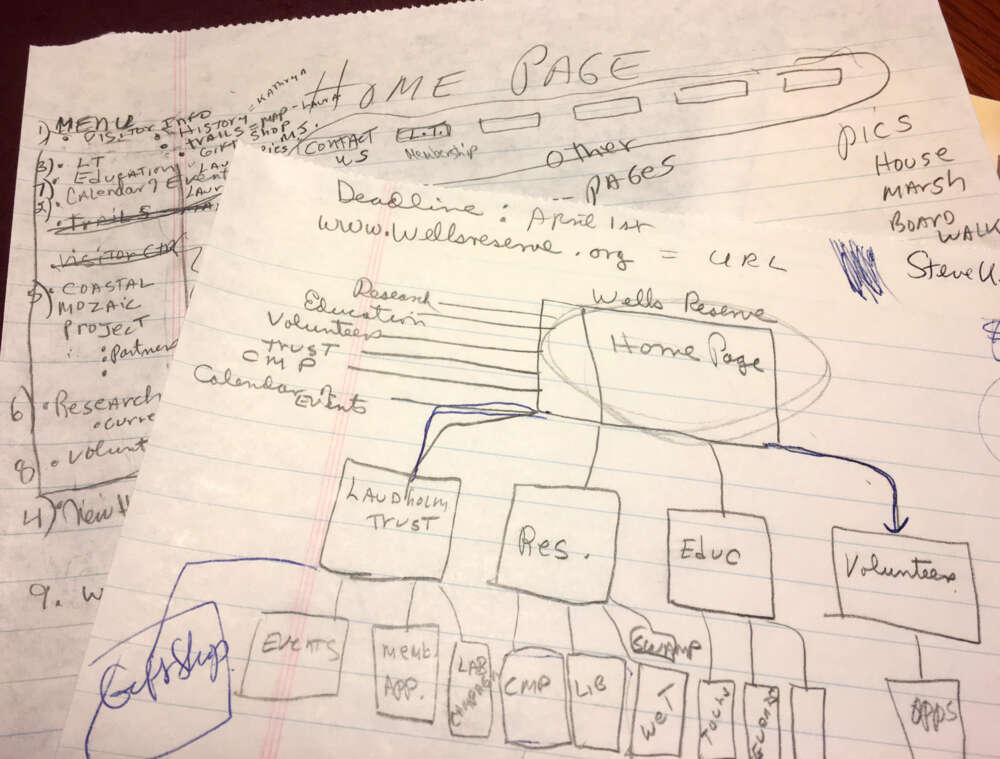
A few months after the domain was secured, the first Wells Reserve website went online. Write.designs of Kennebunk created about 18 pages, the local Internet service provider cyberTours hosted the site, and reserve staff maintained pages using Microsoft FrontPage. The designer, as a complimentary service, offered to submit the new site to “20 of the most popular search engines.” Who remembers Yahoo!? AltaVista? InfoSeek?
The Internet Archive's Wayback Machine provides a fascinating glimpse into the website's sometimes dramatic evolution. Since September 2000, the tool has captured the home page more than 500 times and logged more than 10,000 URLs within the site. We've selected a few highlights that illustrate key changes over the years.
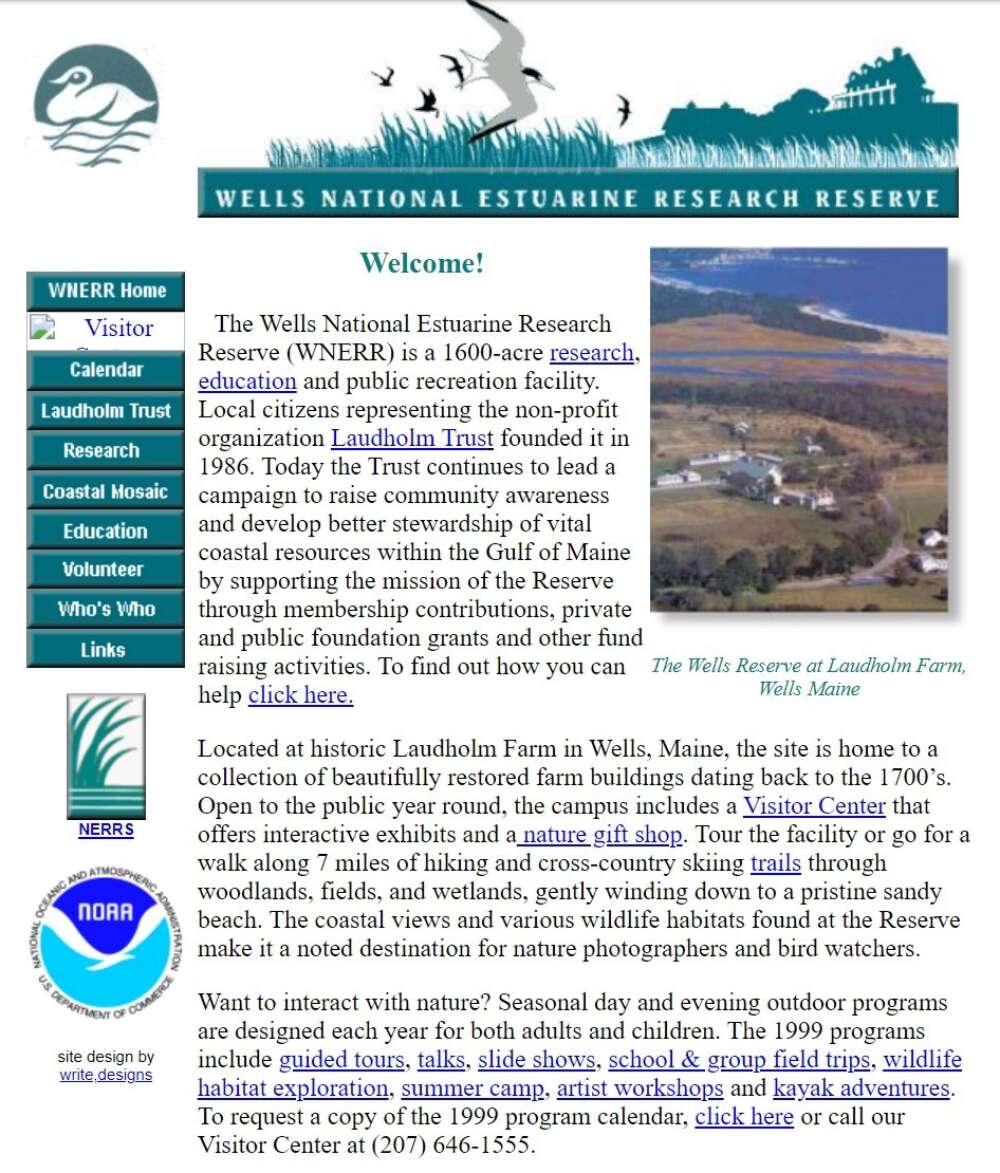
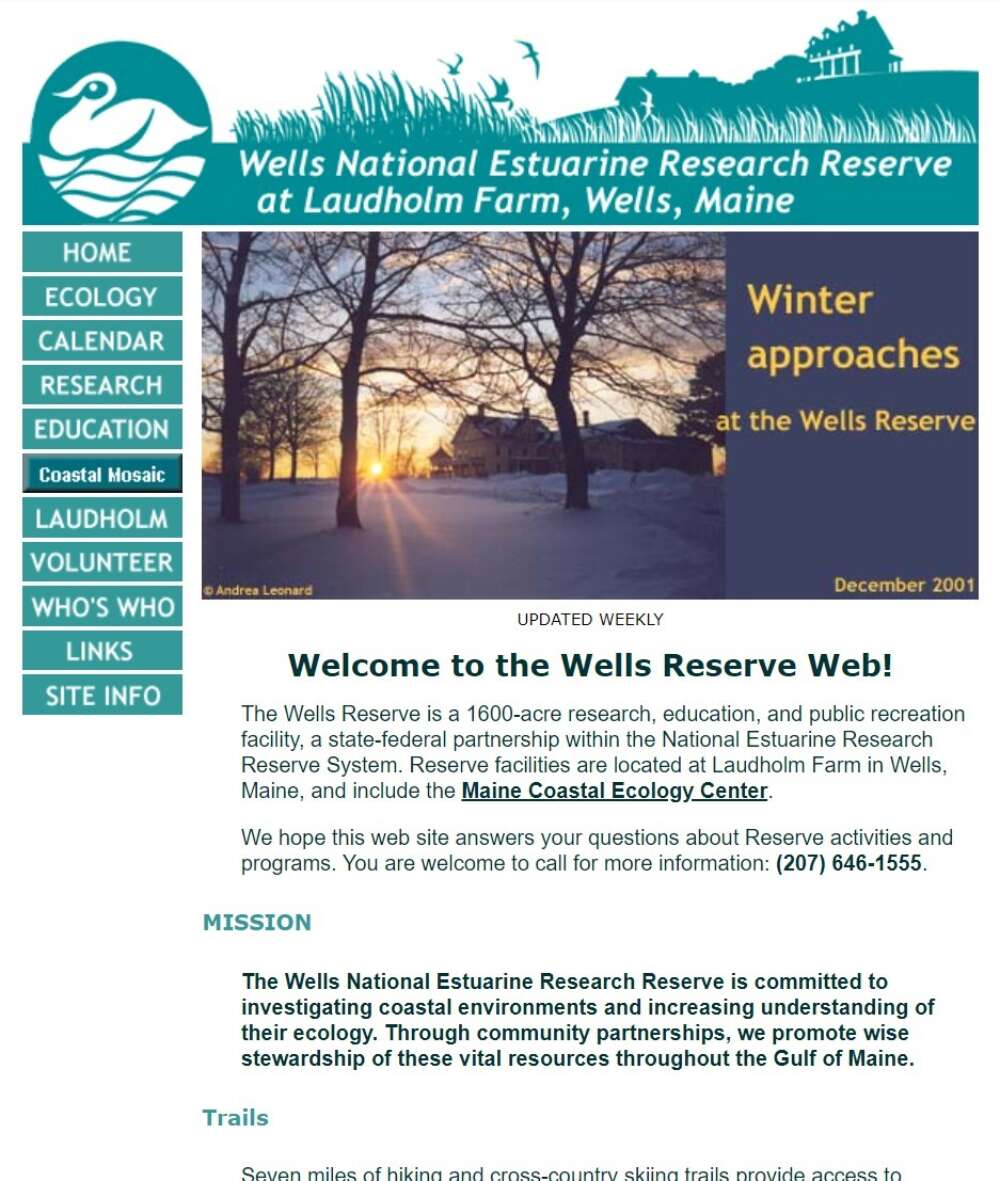
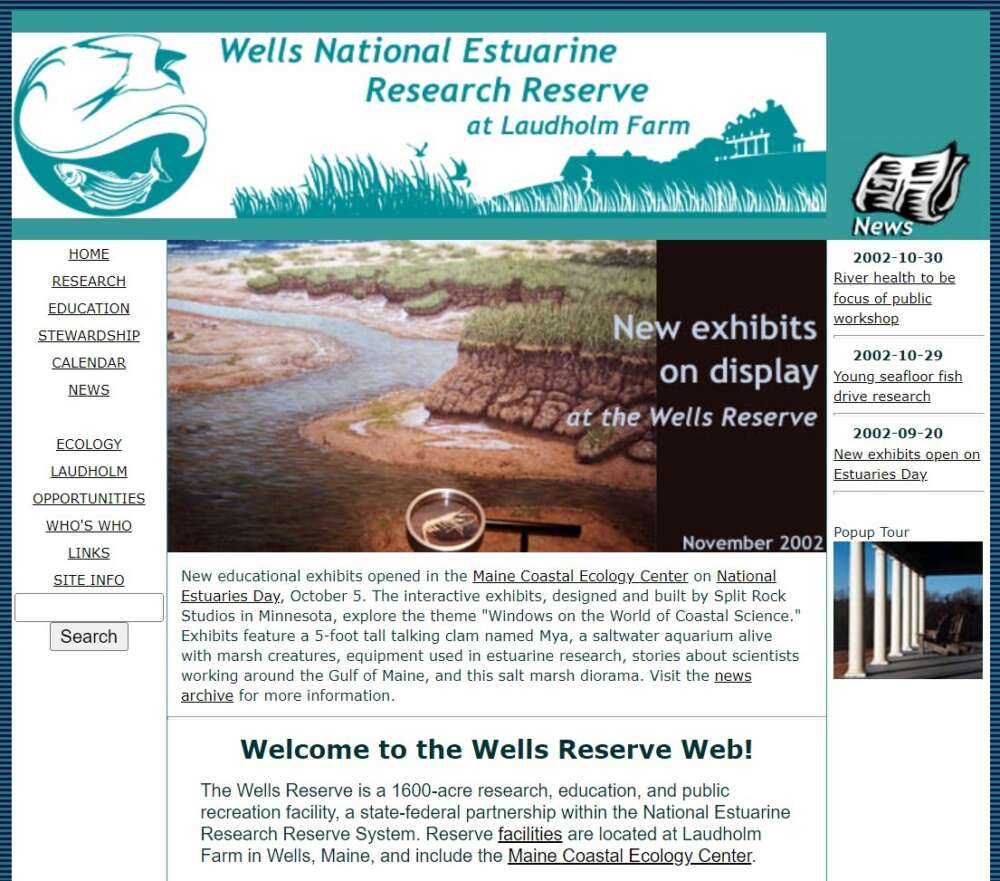
While the main website remained "static," with each update requiring page-by-page HTML editing and FTP uploads, several new self-contained dynamic elements were being added in parallel. Over a 3-year span, the Wells Reserve launched its Seacoast Watershed Information Manager, a community forum, a custom database of fish and wildlife information, a dedicated site for mobile devices (and personal digital assistants), a blog (at laudholm.org), and a web-based calendar that automatically fed upcoming programs to the homepage sidebar.
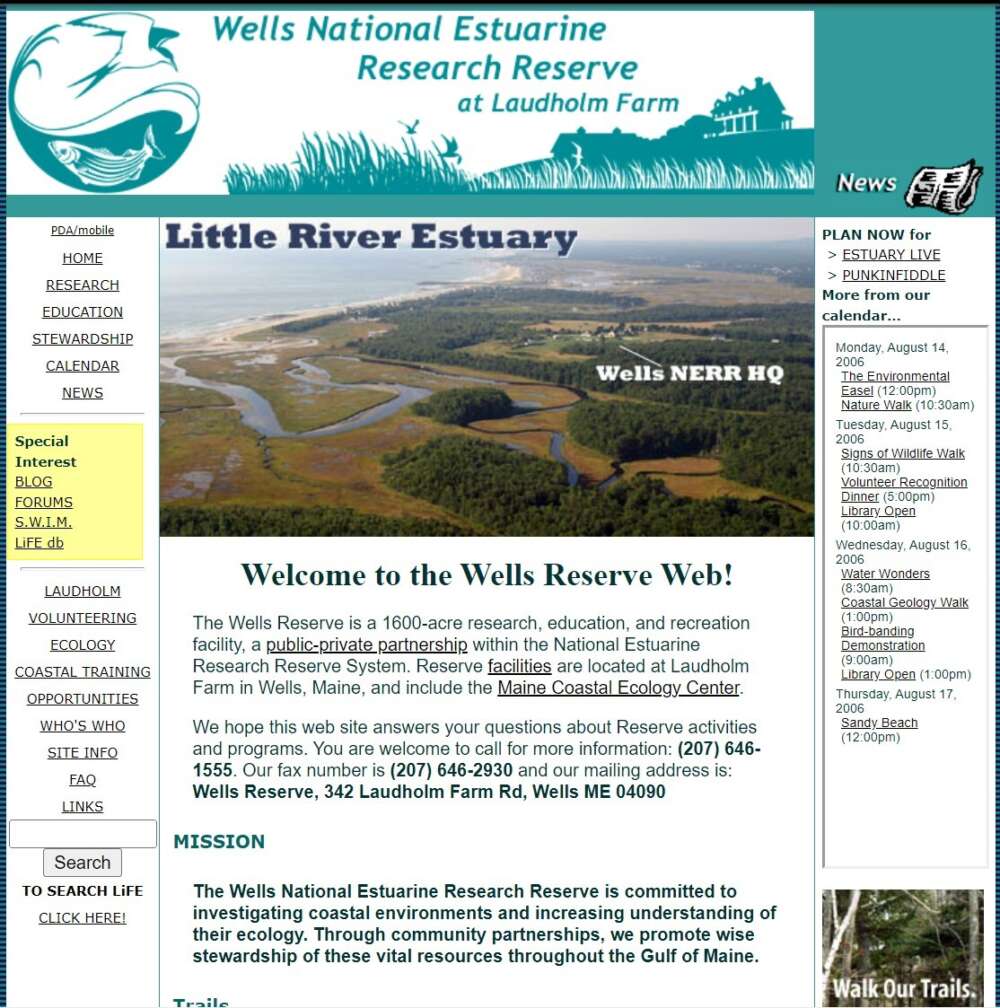
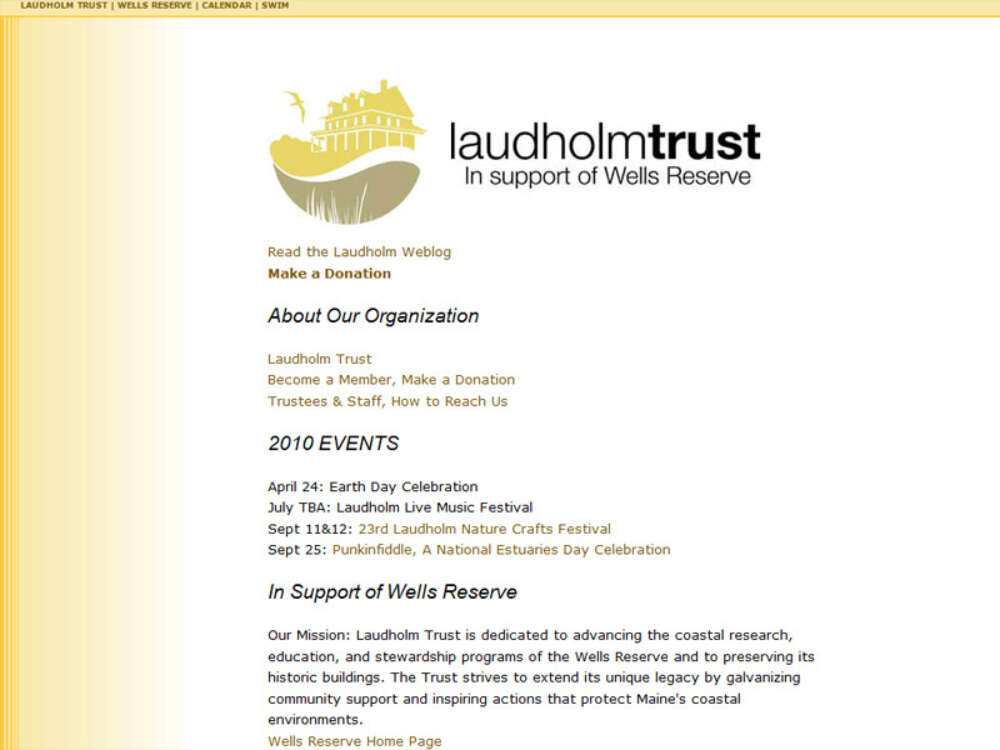
Various components coming online "all at once" had created a mosaic of user experiences and a challenging set of maintenance obligations for a small staff. This realization coincided with a growing interest in unifying the Wells Reserve and Laudholm Trust brands for a clearer public presentation. Between 2007 and 2009, the partner organizations adopted new graphics standards, complementary logos, an entirely new look for publications, and a cohesive joint label for public promotion: Wells Reserve at Laudholm.
It was an ideal time to rethink web offerings. Planning got under way in 2009 and a new, singular site launched in early 2010. The change was dramatic and praised broadly (but not universally, as our new commenting system soon revealed).
I think your new web site is terrible….
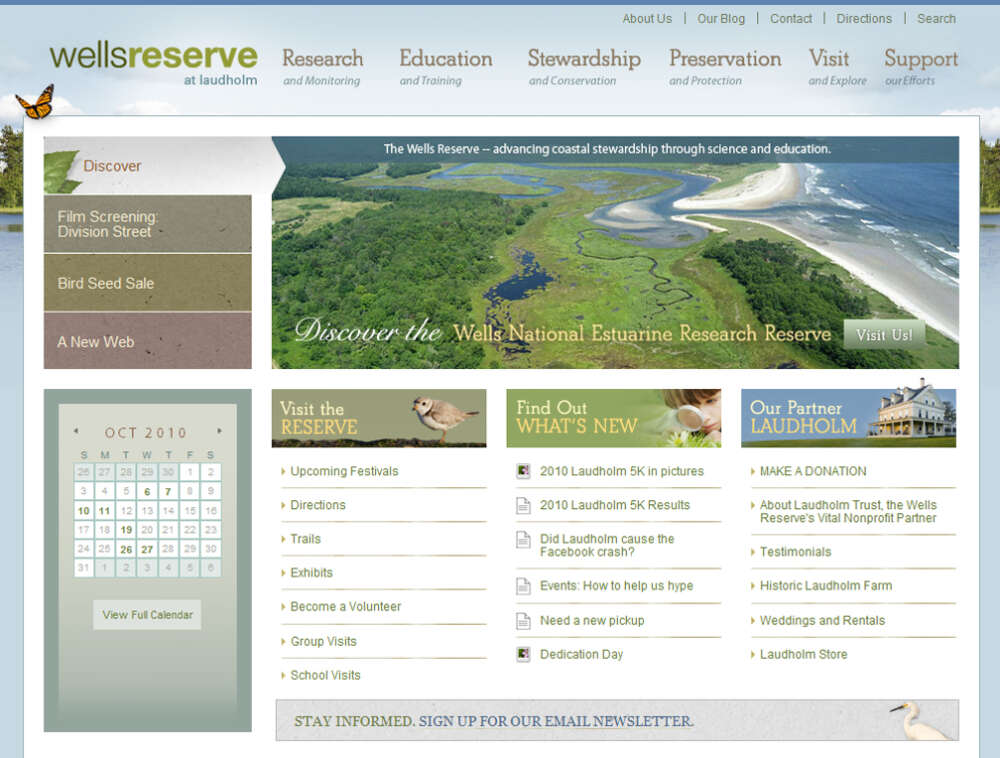
The website, at last, was almost entirely integrated and on solid technological footing. It was attractive, content-rich, and easy to navigate. For staff, the content management system made additions and updates more routine than ever. More people could create content—blogs, programs, events—efficiently and directly.
Still, six years of advances on the World Wide Web and shifts in user expectation gradually caught up with the venerable website. In 2017, another transition was completed. With an entirely new framework and a modern look and feel, the new Wells Reserve web demonstrated smoother integrations with external applications. We were showing off the real-world site, automating registrations for programs, and processing donations with ease. Importantly, the updated site also functioned well on handheld devices, since the intervening years had been seen explosive growth in our visitors' use of web-surfing phones and pads.
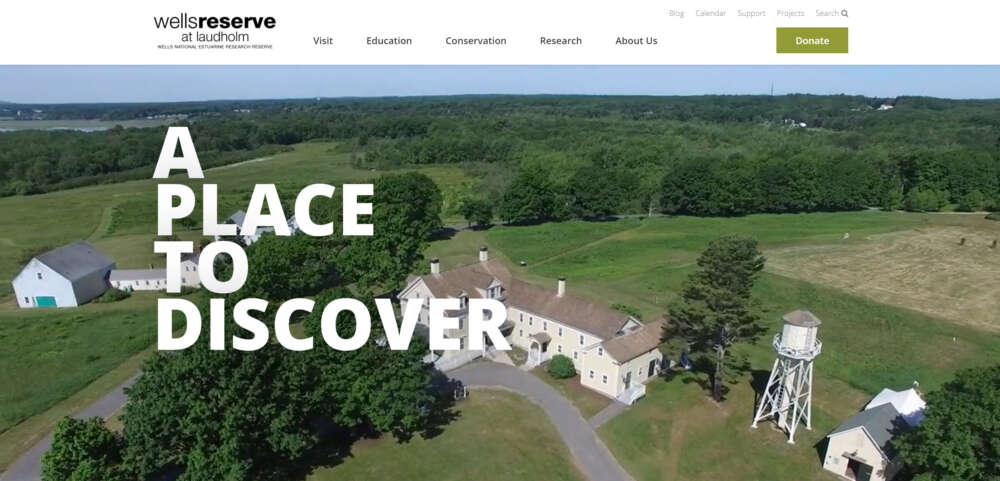
Five years into the latest version of the Wells Reserve web, we elected to focus on updates and refinements rather than broad changes. We upgraded the underlying content management system and tweaked some settings and features in 2022 and 2023.
A website accessibility audit this year revealed we can do a lot more to be inclusive on the web. We have made some improvements and more are on the way. We have plenty of untold stories and unshared pictures that could be populating our blog and projects sections, and a quiver of fresh thoughts and images are imminent as 2024 approaches.
Ultimately, what's important to you is what's important for us. Please feel welcome to share your ideas by emailing web@wellsnerr.org.
Inestimable contributors had hands in building the Wells Reserve web as it grew and morphed. At the beginning, it was Nancy Lowenberg (Bayse) whose foresight and skill fueled the reserve's Internet acceleration, and her name is on that first domain registration form. But she was far from alone; many others—staff and volunteers—were involved in shaping that first foray onto the web.
Steve Kelley (write.designs) built the first website. I plugged away through the toddler and teenage years. George A. Fitch III constructed the LiFe database and a team from NOAA's Coastal Services Center produced the Seacoast Watershed Information Manager. Dietz Associates led the rebranding effort. iMarc LLC undertook 2010's major upgrade and won the contract leading to the 2017 site that remains strong today.